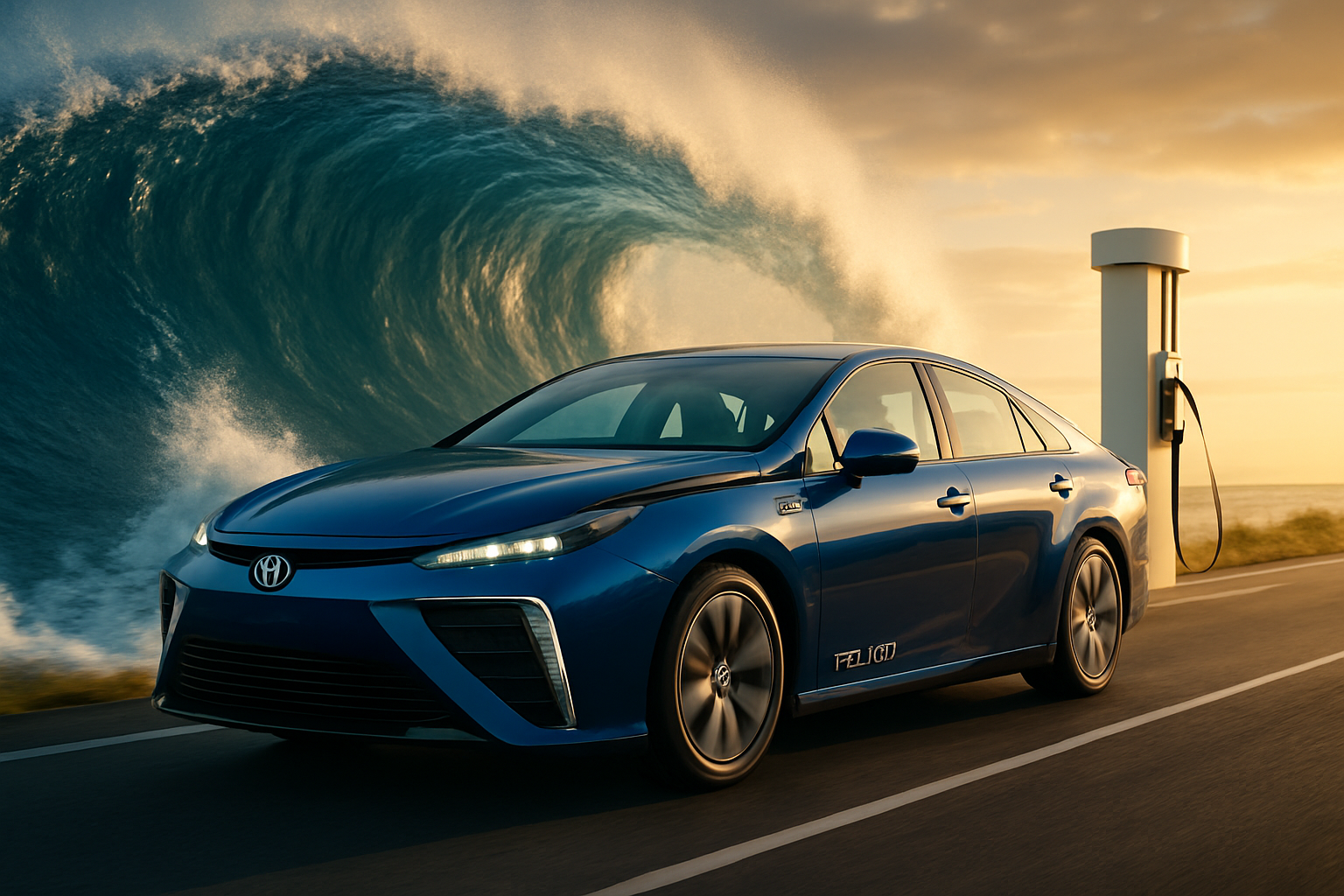Hydrogen Fuel Cell Vehicles: The Silent Revolution on Our Roads
The gentle hum of an electric motor, the soft whoosh of air, and a trail of water vapor - these are the hallmarks of a technology that's quietly reshaping our automotive landscape. Hydrogen fuel cell vehicles (FCVs) are emerging as a formidable contender in the race for sustainable transportation. As we stand on the cusp of a major shift in how we power our journeys, let's dive into the world of hydrogen-powered cars and explore why they might just be the key to unlocking a cleaner, more efficient future on our roads.

Unlike traditional batteries, fuel cells don’t store electricity; they generate it on demand. This continuous production of power means that FCVs can offer ranges comparable to conventional gasoline vehicles, with refueling times that are just as quick. The technology eliminates the long charging times associated with battery electric vehicles, making FCVs an attractive option for those who need to cover long distances or require minimal downtime.
A Brief History of Hydrogen in Automobiles
The concept of using hydrogen as a fuel for vehicles isn’t new. In fact, it dates back to the early 19th century when Swiss inventor François Isaac de Rivaz created an internal combustion engine powered by a mixture of hydrogen and oxygen. However, it wasn’t until the mid-20th century that serious development of hydrogen fuel cells for automotive use began.
NASA’s space program played a crucial role in advancing fuel cell technology, using it to provide power for spacecraft in the 1960s. This paved the way for automotive applications, with General Motors introducing the world’s first fuel cell vehicle prototype, the Electrovan, in 1966. Despite this early start, it would take several more decades of research and development before hydrogen FCVs would become viable for consumer use.
The Current State of Hydrogen Fuel Cell Technology
Today, hydrogen fuel cell vehicles are no longer just a concept - they’re a reality on our roads. Several major automakers have introduced FCV models, with Toyota’s Mirai and Hyundai’s Nexo leading the charge. These vehicles offer performance comparable to their gasoline-powered counterparts, with the added benefit of zero emissions.
The technology has come a long way in recent years. Modern fuel cells are more efficient, more durable, and significantly less expensive to produce than their predecessors. Advances in hydrogen storage technology have also addressed one of the biggest challenges facing FCVs - how to safely and efficiently store enough hydrogen on board to provide a practical driving range.
Infrastructure: The Key to Widespread Adoption
While the technology itself has made great strides, the adoption of hydrogen FCVs faces a significant hurdle: infrastructure. Unlike electricity, which is readily available almost everywhere, hydrogen refueling stations are still relatively scarce. This chicken-and-egg problem - where consumers are hesitant to buy FCVs due to lack of infrastructure, and companies are reluctant to invest in infrastructure without a sizeable market - has slowed the widespread adoption of hydrogen vehicles.
However, this is beginning to change. Countries like Japan, Germany, and South Korea are making significant investments in hydrogen infrastructure. In the United States, California leads the way with a growing network of hydrogen stations. As more refueling stations come online, it’s likely that we’ll see a corresponding increase in FCV adoption.
Environmental Impact and Sustainability
One of the most compelling arguments for hydrogen FCVs is their potential environmental impact. When powered by hydrogen produced from renewable sources, these vehicles offer truly zero-emission transportation. Even when accounting for the entire lifecycle - from hydrogen production to vehicle manufacturing and operation - FCVs have the potential to significantly reduce greenhouse gas emissions compared to conventional vehicles.
However, it’s important to note that the environmental benefits of FCVs depend heavily on how the hydrogen is produced. Currently, most hydrogen is derived from natural gas through a process called steam methane reforming, which does produce carbon emissions. The challenge moving forward will be to scale up green hydrogen production methods, such as electrolysis powered by renewable energy.
The Future of Hydrogen in Transportation
As we look to the future, hydrogen fuel cell technology is poised to play an increasingly important role in our transportation ecosystem. While passenger cars have been the focus of much FCV development, the technology shows particular promise for heavy-duty vehicles like trucks and buses, where the quick refueling times and long range of FCVs offer significant advantages over battery electric alternatives.
Moreover, hydrogen’s potential extends beyond road transportation. The shipping and aviation industries are exploring hydrogen as a means to decarbonize, with prototype hydrogen-powered planes and ships already in development. This broader application of hydrogen technology could help drive down costs and accelerate infrastructure development, further supporting the adoption of FCVs on our roads.
In conclusion, hydrogen fuel cell vehicles represent a fascinating convergence of cutting-edge technology, environmental consciousness, and the age-old human desire for efficient, unrestricted mobility. While challenges remain, particularly in terms of infrastructure and green hydrogen production, the potential benefits of this technology are too significant to ignore. As we continue to seek sustainable solutions for our transportation needs, hydrogen FCVs may well prove to be a crucial piece of the puzzle, silently revolutionizing the way we move in the 21st century and beyond.





